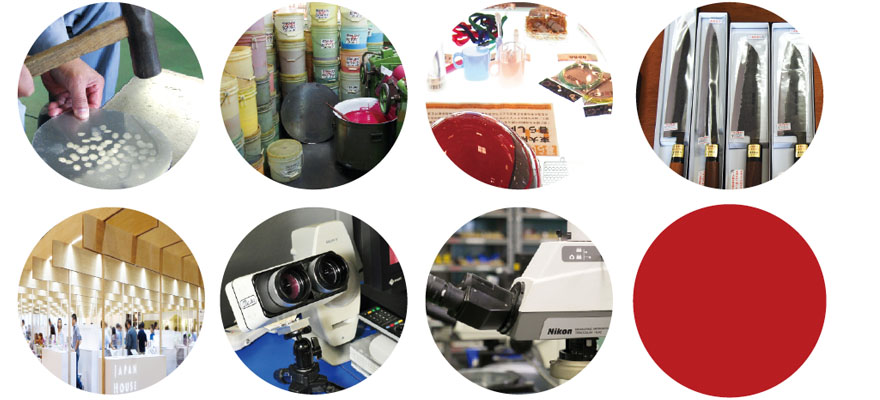Home > Highlighting JAPAN >Highlighting Japan December 2013>Japan's technological achievements
Highlighting JAPAN
Japan's technological achievements
Japan's Technological achievements
Innovation through small and medium enterprises

Japan's cutting-edge technology is known all over the world.
In Japan, the word 'manufacturing' not only refers to the creation of goods, but is also defined as 'the creativity of the craftsman.' Manufacturing characterizes the skills and techniques that underline the technological strengths of Japan. Japanese products are often associated with large companies. However, the various parts that make up those products are usually manufactured by small or medium enterprises.
Japan's history in manufacturing has in fact been carved out by the tireless efforts of these small and medium businesses.
This issue will feature the strengths and advanced skills of small and medium enterprises, which are often counted on as a source of energy in the modern Japanese economy.
![]()
Dr. Hashimoto Interview
An insightful conversation about
the development of manufacturing in Japan

Japan's small and medium enterprises supported traditional crafts since before the Meiji Period, and even now continue to support the development of the nation's modern industry. Today, they form the backbone of world-class technologies. To learn about how these enterprises have supported Japan's growth, we spoke to Dr. Hisayoshi Hashimoto, former director of the technology division at the Small and Medium Enterprise Agency, now doing research focusing on the activities of small and medium enterprises at the National Graduate Institute for Policy Studies.
Tell us a little bit about the history of how Japan developed its skills in manufacturing and industry.
Japan existed in a state of national isolation until the end of the Edo Period, which gave it some time to develop its own unique culture without much influence from outside. The growth of culture can be seen most clearly during that time, which is when samurai culture was born. The skills of craftsmen were already flourishing as they created the impressive swords that were to become protective and sacred objects for the samurai.
During the Meiji Period, the Japanese government focused on developing the compulsory education system, as people believed that education laid the groundwork for industries to grow. If you look at Japan's education system, medicine came into place first, followed by engineering and thirdly law. In most overseas countries, education always started with theology, which was then followed by law, literature and engineering.
What trends can be seen in the development of Japanese industry?
Between 1945 and 1955, basic industries were cultivated where electric power, iron, steel and coal were the main areas of development. The government believed that if these three areas started to grow, then all other areas would follow naturally.
During the 1960s, Japan's heavy chemical industry was cultivated, which allowed the mechanical, electrical and automotive industries to flourish. It was during the 1970s that Japan started focusing on automobiles, computers, electronics and precision machinery. Strict adherence to Japan's inter-industry input-output table became a part of our manufacturing strategy.
How does the growth of Japanese small and medium enterprises differ from countries overseas?
Japan focused on strengthening small and medium industries from the outset. For example, to strengthen the automobile industry, it first strengthened the companies that made the accessories, or parts of the cars. The car makers themselves set it out this way, so these companies developed a sort of parent-child relationship over time. So in Japan's auto industry, the focus is on the parts-making companies rather than on the companies that do the assembly. In other countries, it's the other way around.
I think it is incredible that although they are rivals in reality, small and medium enterprises have helped each other in modernizing Japan, as well as achieving high productivity.
We've heard that you spent a lot of time visiting various factories. Tell us a little about that.
I've visited 3,518 factories so far. Most of the owners or heads of those companies are not only interesting individuals, but they are extremely dedicated to educating their employees. Bigger companies can attract candidates just with their names, but the presidents of small and medium companies have to rely on personality to attract and hold talent. The employees in turn have dedicated themselves to their work, always thinking of their customers from beginning to end. This is why they have earned the trust of bigger companies.
What do you think Japan should work on to appeal to foreign markets?
I think more than anything; enterprises with a desire to expand overseas must simply take that first step. While it's said that you must carefully and deliberately research your target countries, you still have to jump into the pool if you want to learn how to swim. I'd just like to see Japanese small and medium enterprises keep steadily trying without fear of failure.
© 2009 Cabinet Office, Government of Japan






